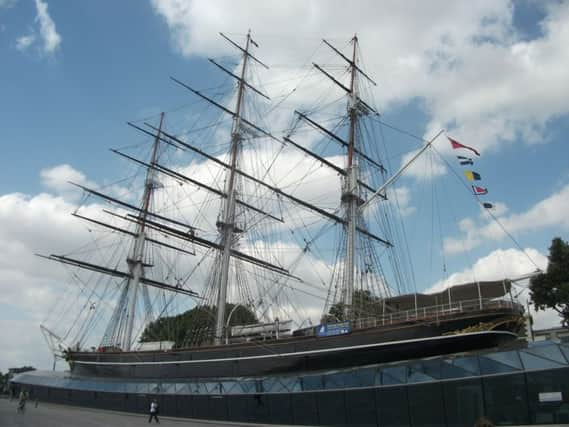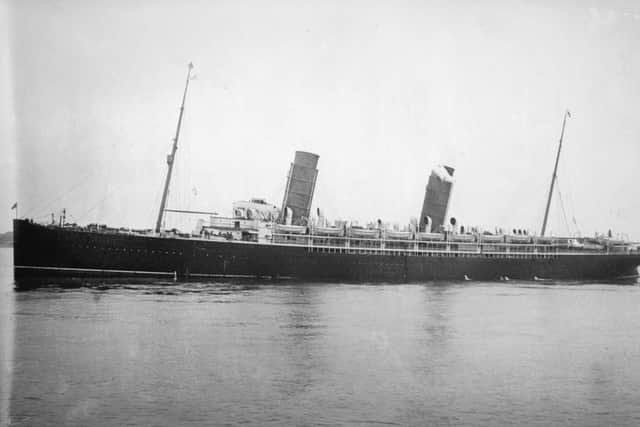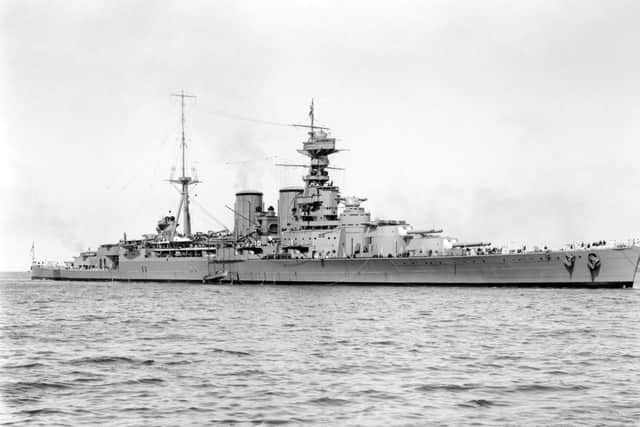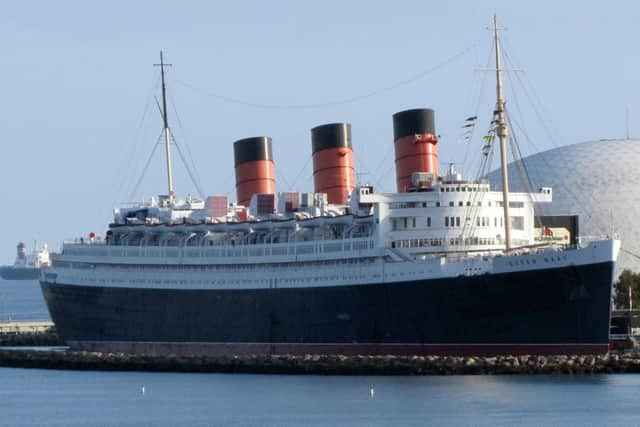Seven of the most famous ships built on the River Clyde


Comet
It may have only been 45ft long, but the Comet represented a giant leap forward in shipbuilding technology when launched at Port Glasgow in 1812. The vessel provided the first commercially successful steamboat ferry service in Europe and hinted the era of sailing ships may be coming to an end. The Comet was built for Henry Bell, a Scottish engineer fascinated by the potential of steam power. When his wife became manager of a public baths and hotel in Helensburgh, Bell saw an opportunity to attract customers to the seaside town with a state-of-the-art ferry. The Comet was outclassed by other steamers within four years but had by then secured her footnote in maritime history. A replica of the boat now stands in Port Glasgow town centre.
Cutty Sark


It would take another 50 years before steam overtook wind as the power source of the biggest ships. The Cutty Sark was one of the last of its kind when launched in 1869 at the Scott & Linton yard in Dumbarton. Known as a clipper - a mid-19th century type of sailing ship built for speed - such vessels were characterised by a narrow hull and large total sail area. Cutty Sark was ordered by the shipping magnate John Willis and named after a character in Robert Burns’ classic poem Tam o’Shanter. Although famously associated with the Chinese tea trade, Cutty Sark spent most of her life at sea transporting wool from Australia. She last sailed in 1938 and became a cadet training ship. In 1954 the Cutty Sark was towed to a custom-built dry dock in Greenwich, south London, where she has remained ever since. The ship is a prominent landmark on the route of the annual London Marathon.
RMS Lucania
Advertisement
Hide AdAdvertisement
Hide AdIn an era before air travel there was huge public interest in ships capable of reaching far-flung destinations at increasing speeds. The most prestigious route in British maritime trade was the Atlantic crossing to the US. Shipping companies promoted themselves on the speed and ease in which they could reach New York. The fastest passenger liner was awarded the Blue Riband, an unofficial accolade borrowed from horse racing. RMS Lucania, built at the Fairfields yard in Govan and launched in 1893, won the title on just her second ever voyage. At the time, Lucania and her sister ship Campania had the largest triple expansion engines ever fitted to Cunard liners.
HMS Hood


Built at John Brown’s yard in Clydebank and launched in 1918, HMS Hood was the pride of the Royal Navy and the most famous battleship in Britian upon the outbreak of war in 1939. Known as ‘The Mighty Hood’, the battlecruiser was employed to protect convoys in the North Sea and as a general deterrent against invasion. In 1941 the Hood was ordered to intercept the Bismarck - the largest battleship ever built by the German navy - and prevent her reaching the Atlantic where she would pose a threat to Allied shipping. On May 24 the Hood and HMS Prince of Wales spotted the Bismarck and opened fire. Less than 10 minutes later, a German shell struck the Hood and exploded her main ammunition magazine. The battleship sank within three minutes with the loss of all but three of her 1418 crew. It remains one of the blackest days in Royal Navy history and was a huge blow to British morale. The Bismarck was sunk two weeks later after being tracked by HMS Ark Royal. The wreck of the Hood was finally located in 2001 and one of her two ship’s bells was retrieved in 2015. It is planned to display the bell at a permanent memorial to the Hood and her crew.
RMS Queen Mary
The Queen Mary, along with her sister ship Queen Elizabeth, were built for Cunard’s weekly express service between Southampton, Cherbourg, and New York. It was the dying days of the superliner era which would soon be ended by the growing popularity of transatlantic flights. Built at John Brown’s Clydebank yard and launched in 1934, the Queen Mary won the Blue Ribband in August 1936 for the fastest Atlantic crossing. She regained it in 1938 and would hold the title until 1952. The ship was named after Queen Mary, consort of King George V, and remained popular with passengers and the wider public into the 1960s. She was retired in 1967 and sailed to Long Beach, California, where she is now permanently moored as a floating hotel.
Queen Elizabeth 2


Ocean liners were no longer built solely with transport in mind by the time of the Queen Mary’s retiral. Instead they were marketed as holiday destinations in their own right. The age of luxury cruises arrived at just the right time for the Queen Elizabeth 2 - or the QE2 as she quickly became known. She was the last superliner to be built at John Brown’s yard in Clydebank and many Scots can still recall her launch in September 1967. The interior and superstructure of the ship was designed by James Gardner - described by the Council of Industrial Design as that of a “very big yacht”. The QE2 would serve as the Cunard line’s flagship from 1969 until the launch of the French-built Queen Mary 2 in 2004. Although she spent much of her life as a crusie ship, the QE2 did undertake scheduled sailings from Southhampton to New York each year - a tradition continued by the Queen Mary 2. The liner was retired in 2008 and sold to an investment consortium. The QE2 is currently laid up at Port Rashid in the UAE, where her future remains unclear.
HMS Daring
Shipbuilding on the Clyde is today concentrated on three remaining yards and is dominated by Royal Navy orders. Defence giant BAE Systems operates sites at Govan and Scotstoun while a smaller commercial yard at Port Glasgow remains in private hands. The most prestigious shipbuilding programme on the river in recent years was the construction of six Type 45 destroyers. The first to be launched in 2006 was HMS Daring, the seventh naval ship to be given the name. Following the Falklands War, the Type 45s were primarily designed for anti-air warfare and are characterised by their distinctive radar towers. It has been suggested Daring’s radar is capable of tracking 1,000 objects the size of a cricket ball travelling at three times the speed of sound.